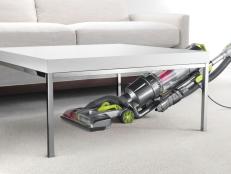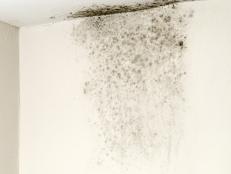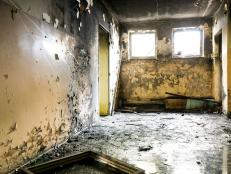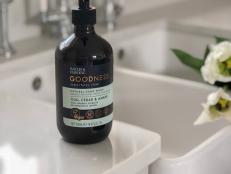Controlling Mold Growth in Your Home
Q: After reading your article regarding mold, I checked out my 36-year-old home and found very little, except in the attic. The attic is basically a crawl space with loose insulation between the ceiling joists. I found approximately 10 percent of the roof rafters covered in spots with a white powdery substance which I assumed to be mold.
The attic seems dry at present; however, I imagine it gets pretty humid in the summer. What is the best way to clean up this problem? After cleanup, how do I control moisture in the attic? -- B.G., Brockton, Mass.
A: Not all discolorations on wood are molds. Almost all building products will support mold or fungi growth. On wood there are three basic fungi: decay fungi, stain fungi and mold fungi. Some dark stains can be attributed to the natural oils or acids inherent in wood that are often brought to the surface by the heat inside the attic. Stain fungi is an aesthetic problem, decay fungi damages the wood and mold fungi can be cleaned or removed.
The attic should be dry in the summer, because the heat from the roof drives moisture to the inside of the home or out through the roof vents. Attics are more susceptible to moisture problems in the winter when heat generated inside the home drives moisture from the living area to the attic.
When moist air reaches the dew point, it condenses back to water and soaks into the rafters, decking or insulation. It is the moisture that helps to feed the mold spores and decay fungi. Mold spores will always be with you.
To prevent future mold growth or decay, you need to control the moisture in the attic, inside the home and especially under the home. Use an attic fan that has a humidistat to pull moisture from the attic in the winter. Use foundation vents that can be opened in the winter and closed in the summer. Inside the home use bathroom and kitchen vent fans that are vented to the exterior, never to the attic, garage or foundation.
If you have any kind of leak, whether plumbing, roofing or foundation, repair and dry out the area immediately. Discard any materials that are infested with molds, especially paper, cardboard and floor coverings. Wood in attics and foundations can be treated with boron-based products.
When hiring a contractor, be very careful to check on his previous work history and ethics. My sources have told me about an industrial hygienist who checks for molds in home, provides a protocol for mold removal, then brings in a remediation contractor who charges anywhere from $10,000 and up while other professional contractors in the same area are charging around $1,000 or less for similar work.
Because mold is a frightening issue that can affect your health there are those who would take advantage of this situation to line their pockets. Until guidelines are established by a governing agency, be careful whom you hire.
Remediation contractors need to follow safe protocol procedures, wear proper safety gear, protect the home from additional airborne infestation, remove contaminated materials and treat what cannot be removed.
Sampling for mold spores needs to be taken after the cleanup is completed. Be aware that remediation work is labor intensive with little cost for the treatment materials. Areas that are difficult to reach may cost more to clean and treat.
Once the wood has been treated, make sure to keep the wood dry. Dry wood and boron-treated wood will resist mold fungi, stain fungi, decay fungi, termites and powder post beetles.
Dwight Barnett is a certified master inspector with the American Society of Home Inspectors.













































